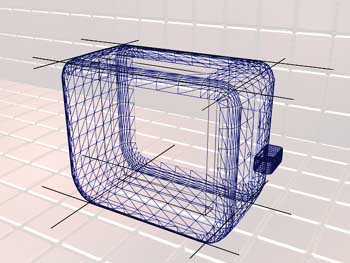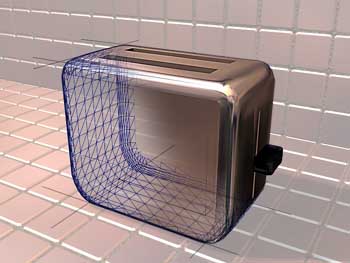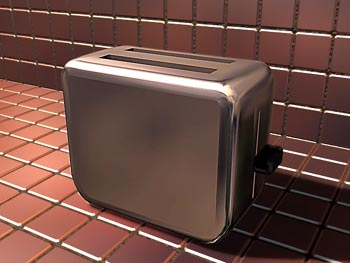3D graphics
are "Computer Generated Images" (CGI) that are created from a set of digital
blueprints (a model). The computer can determine how the modeled object would
look from any angle selected by the user.
The process of "modeling" is carried out with CAD (Computer
Aided Design) programs like the ones used by architects and industrial designers. The more
detailed the model the better the final renderings will look. Renderings are pictures of
the model generated by the computer usually from a virtual camera.

The designer must give the computer all the information required by it to
compute the resulting image. The information required is much more than just the shape of
the object(s) to render. Some examples are the lighting around the object(s), textures and
the users point of view (camera position) relative to the modeled object(s).
High end software for 3D modeling and rendering will allow the designer to
determine how many lights are used, where they are relative to the objects, what color
light they project, light intensity, and even their shadow casting characteristics to name
just a few.

The designer must also define the detailed characteristics of the textures
to be applied to each of the modeled objects. Some examples would be smoothness or
roughness, shininess, or even the amount of transparency or opacity (glass water etc.).
Many textures may also be derived from using photos.
Camera position is but one of many parameters to be considered by the
computer when computing a rendering. Some others are the lens, the field of view, and zoom
all of which contribute to the end viewers perspective of the 3d objects in the model.
In a perfect world (or at least a digital one) all of the different
elements of a detailed model may be adjusted over a timeline to create animation.
For example an object in the model could be in one location, position a, at the first
"frame" and then the designer can specify that 200 frames later the same object
should be located at position b.

The computer can then compute the path the object must travel along to reach the
specified position at the specified time. Consequently the images or frames in between the
specified frames (1 and 200) can be predicted and rendered by the computer. You can see
lights dim or change color; objects can grow or change shape; or you can zoom a virtual
camera through a building that only exists in the computer and record the footage as you
go. |